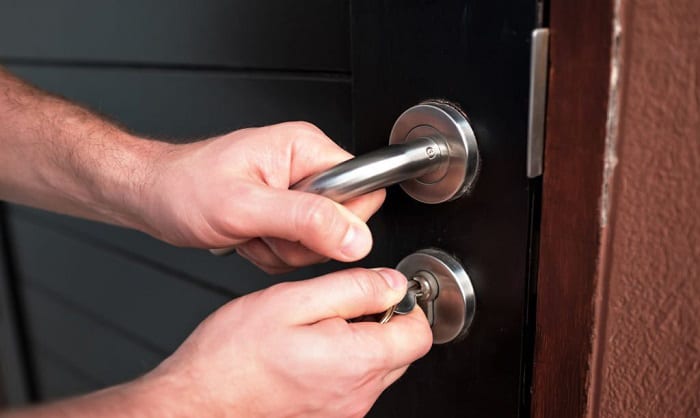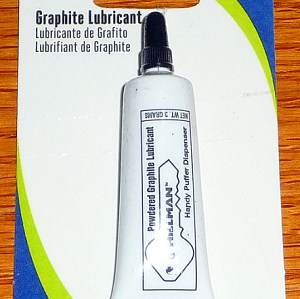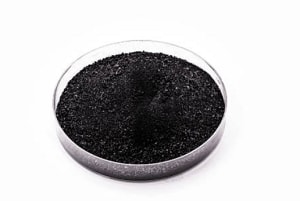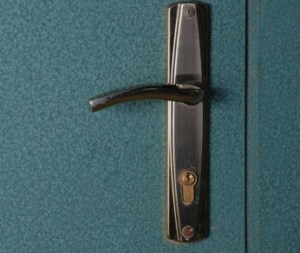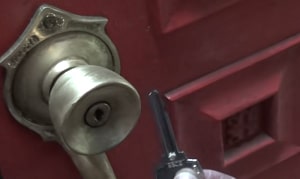More often than not, a sticky key lock can be a recurring nuisance, especially when you are in a hurry and it is cold outside in winter. In most cases, wrestling to unlock a sticky door lock might damage the surrounding parts of your door or the lock itself.
Fixing a sticky door lock is not an easy job, but it is not a walk in the park either. To make your home more convenient to access, follow these steps on how to fix a sticky door lock.
Table of Contents
List of Tools and Materials to Fix a Sticky Door Lock
Before diving and knowing how to unstick a door lock, you have to procure certain materials first. The following materials are needed to fix door lock that sticks:
- Graphite Powder
- Pencil
- Lubricant
You do not need to have all the three materials to fix the door lock mechanism sticking. One of the materials is already sufficient.
Simple Ways to Fix a Sticky Door Lock
There are multiple ways to fix a sticky door lock. Depending on the materials you have, find and choose what is easier and more convenient for you.
1. Apply a lubricant
Door knob locks can get really sticky, and this can be attributed to either the door latch or keyhole. In the event where you have a sticking door latch or your door latch would not completely retract, you have the option of using a lubricant.
The preferred type of lubricant to lubricate a lock is graphite. This is because dust and dirt are not attracted to graphite lubricants, which will cause damage to the door’s locking mechanism.
For a key sticking in lock, WD40 application is not recommended since it will just make the lock stickier due to its residue.
2. Blow graphite powder
Due to the gunk that builds up when you use lubricants making your house’s front door lock sticking, graphite powder is recommended. Graphite powder is sold in either spray cans or squeeze bottles, making it easier to apply by blowing it onto the sticking door lock directly.
3. Use a pencil
The pencil’s lead is made of graphite, and if you don’t have graphite powder in your trusty hardware store, a pencil is a way to go. If your key sticks in lock, thickly brush your pencil on both sides of the key.
After your key is now covered with graphite from the pencil, try to put your key inside the lock and carefully turn it until you feel that the lock can be opened.
4. Get a locksmith
When you have exhausted all your resources and nothing seems to work, call a locksmith to fix a stuck lock cylinder. Especially when your car door lock is sticky, you do not want to mess with it and damage it further.
5. Go keyless!
Ditch your UPVC door lock and other types of locks, and go with keyless locks. In this way, you will never have to worry about your door lock thumb turn sticking again.
Keyless locks utilize personal access codes that you have to input onto the keypad. It has the functional efficiency and reliability that key locks do not have.
Common Causes of Sticky Door Locks
There are several reasons why you have a sticky door lock or your key suddenly hard to get in lock. To avoid further sticky door locks in the future, find out the common causes of sticky door locks.
1. Door lock is corroded
The weather and the make of the material might affect the lifespan of the door lock, making the door lock hard to turn key. If this is the case, a temporary fix would be putting a lubricant.
However, due to its condition, you might have to restore or replace the door lock eventually for a permanent solution to the problem.
2. Having a worn key
Having an old and worn key might affect the insides of the lock, making it sticky and the door lock jammed key won’t turn. To make sure your door locks will not get sticky, have a locksmith duplicate your keys.
3. The door itself is sticking
Especially in summer, the temperature might get too hot, making the door frame expand. The expansion of the door frame can cause the deadbolt or latch of the door to shift and not line up anymore with the door frame’s hole.
Helpful Tips
What Not to Do to Sticky Door Locks
Having a sticky door lock is a hassle, and when you are already desperate, you might try doing something that will do more harm than good. These are the following things you should avoid when you have a sticky door lock:
- Using different types of oil such as sewing machine oil, linseed oil, or penetrating oil.
- Utilizing sharp tools to try and pick the lock such as knives and pins
- Trying out lubricants that are petroleum-based like WD-40 or motor oil.
- Smashing it with a mallet or hammer to fix the lock.
Trying out these things might make your door lock unrepairable, eventually forcing you to buy and install another door lock.
What Can I Use for a Sticky Door Lock?
Sticky door locks do not need special tools in order for it to unstick. Graphite powder or graphite lubricant is the best choice you have to make it unstick.
However, it is not recommended to use other types of lubricant as this will only collect gunks inside the door lock.
If you are in a hurry and cannot immediately go to the nearest hardware store, you can always use a pencil and color the key with it.
Conclusion
Learning how to fix a sticky door lock will come a long way. Following the above-mentioned steps and knowing what not to do will save you a lot of money. Fixing your sticky door lock will not just give you the piece of mind that you need. It will also make for a good handiness skill.

I am the last member to join Revolar and might be just the luckiest to work with dedicated people like Teddy and John. Our team has established a process where my only job is writing the best content to deliver incredible ideas and guides.


